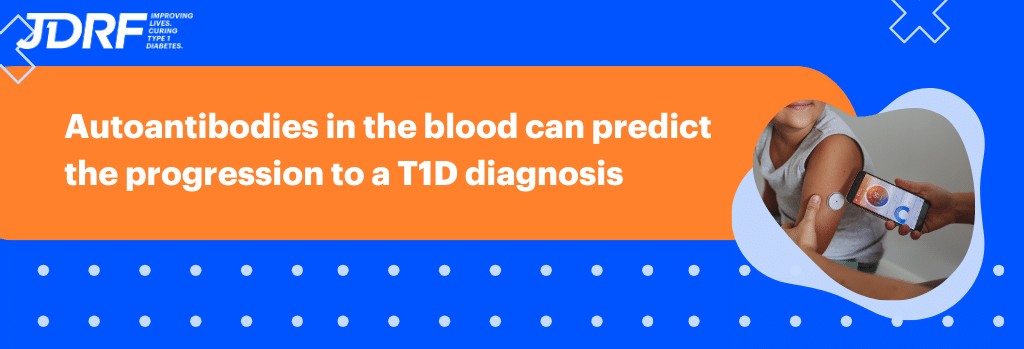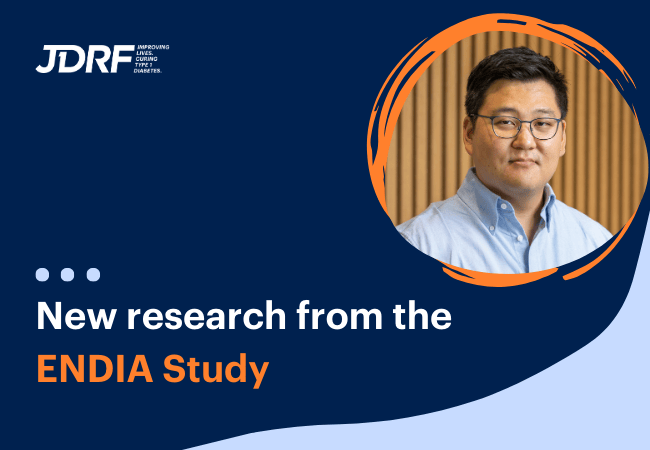The T1D canary – looking at islet autoantibodies to predict the progression to symptomatic type 1 diabetes

A new study has added to the evidence that people develop type 1 diabetes (T1D) at different rates, and that a blood test can predict when this may occur
We used to think that people only developed T1D when they showed the ‘4T symptoms’: thirst, tiredness, toilet (increased urination) and thin (weigh loss). And while most T1D diagnoses occur at this stage, years of research have demonstrated that the condition actually starts months or even years before these more obvious symptoms show.
During this period, the person may have ‘early-stage’ or ‘presymptomatic T1D’ and not know it. The stage at which the 4T symptoms show comes afterwards and is called ‘symptomatic T1D’.
Read more about the stages of T1D and why they’re important here.
Autoantibodies as a marker of early-stage T1D
A key marker of early-stage T1D is the production of islet autoantibodies (proteins that can be detected in the blood). These autoantibodies are produced as part of the immune system attack on the insulin-producing beta cells which live in islets of the pancreas. This immune attack leads to people with T1D no longer being able to produce enough of their own insulin.
There are at least five islet autoantibodies that have been linked to someone developing T1D: GADA/GAD-65, IA-2A, ZnT8, IAA and ICA. We know that in the early stages of the condition, people show different numbers of these autoantibodies in their blood and present with them at different ages. But we don’t know why these differences occur – and, more importantly, what these differences may mean in terms of the likelihood of going on to develop symptomatic T1D.
Now a JDRF-funded study, published in Diabetes Care, has investigated the link between autoantibodies in children with a family history of T1D and the risk of them going on to develop symptomatic T1D. This knowledge will help to identify whether children may progress slowly or rapidly to symptomatic T1D and prepare their families for a T1D diagnosis – and, in future, identify which therapy may best benefit them.
What was the study about?
The research was part of the Type 1 Diabetes Intelligence (T1DI) study, which looked at over 1,800 European and US children genetically predisposed to develop T1D, following them up for an average of 12 years. These children also showed at least one islet autoantibody in their blood.
The researchers used sophisticated data analysis tools to find the link between the number and type of autoantibodies present, the age of the child when an autoantibody was first detected and the time it took to develop symptomatic T1D. The islet autoantibodies they focused on were GADA, IA-2A and IAA.

Image: Islet autoantibodies are proteins found in blood that are a hallmark of the immune system attacking the insulin-producing beta cells of the pancreas. Autoantibodies can appear in the early or presymptomatic stages of T1D, but we don’t know how or why their appearance varies amongst people.
What did the study show?
The researchers found that the children could be divided into five groups. Each group had a characteristic age at which they first developed islet autoantibodies, a different chance of going on to develop symptomatic T1D, and varying lengths of time taken to get to a symptomatic T1D diagnosis.
Specifically, the researchers found that:
- Children with the highest chance of going on to develop symptomatic T1D first showed an islet antibody at two years of age or younger, and had all three autoantibodies (GADA, IA-2A and IAA) in their blood. These children also developed symptomatic T1D the quickest
- Children with the lowest chance of developing symptomatic T1D were those with a single islet autoantibody that was not always present in their blood
- Children who showed IAA as their first autoantibody progressed more quickly to symptomatic T1D compared to children who showed other autoantibodies first
What does this mean for the T1D community?
Being able to identify different groups of children who have a higher chance of developing T1D, and having an idea of the timeline at which it may evolve into symptomatic T1D, is important information for researchers and doctors. Being able to predict clinical T1D diagnosis will help families get the counselling and advice they need, at the right time. And in the future, it may also mean they get access to a preventive drug to help slow down the progression of T1D, specific to that group, precisely when it’s needed. This is the basis of personalised medicine, which JDRF hopes to bring to the field of T1D in the near future.
Read more about JDRF’s plans to bring precision medicine for T1D here.
Learn more about the JDRF’s recently funded projects in T1D precision medicine here.



